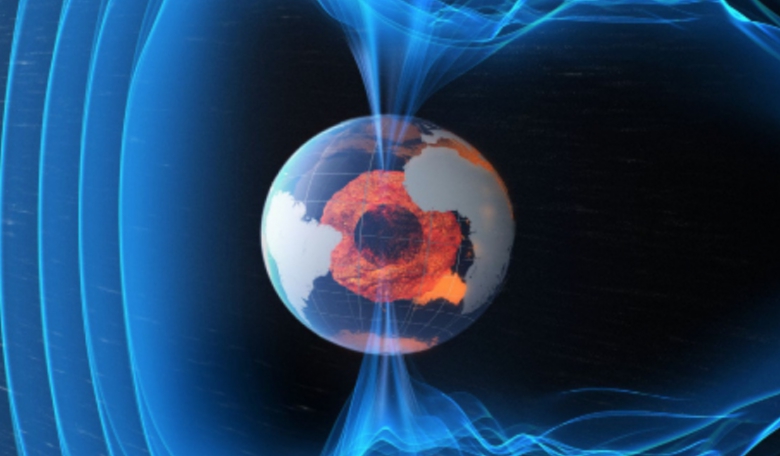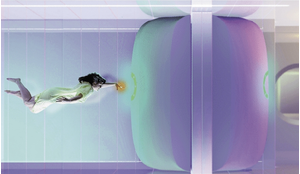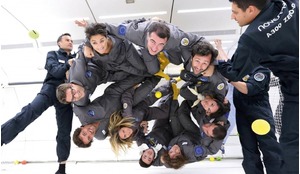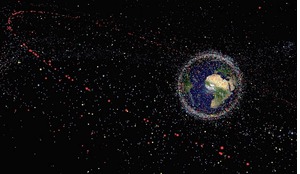In our search of the cosmos for planets that might support intelligent life we have now begun to realise that the existence of what are called ‘Goldilocks worlds’ may very well be rare indeed. And by Goldilocks worlds we mean planets that are just right - not too cold and not too hot. We also mean a planet with water and natural resources as well as an atmosphere and a magnetic field to support life systems and protect them from stellar heat and radiation and coronal mass ejections (CME). But the question of relevance is: Just how safe is Earth from cosmic dangers?
We humans, in fact, have become somewhat complacent about the natural protective systems that our six-sextillion ton spacecraft has to protect us from - solar storms, comets, asteroids, and cosmic rays. We forget that our atmosphere and our naturally formed Van Allen belts held in place by the Earth’s magnetic poles serve to shield us from massive blasts of ions that periodically travel from the Sun.
These so-called coronal mass ejections travel at millions of kilometres an hour. If one of these CMEs were to hit Earth head-on, it would have the power to create natural electro-magnetic pulses (EMPs) far more effectively than a thermonuclear blast.
Over the course of the last half century, the world has finally begun to learn that a massive asteroid or comet strike could create havoc and ruin, on perhaps a planetary scale. After decades of urging, the United Nations has created an International Asteroid Warning Network (IAWN) and even a Space Mission Planning Advisory Group (SMPAG) - pronounced ‘same page’. We even have missions such as the B612 Foundation’s Sentinel Project that is planning to launch an infrared telescope that can scour the skies and give us warning of a killer asteroid that might hit Earth.
This article is therefore about how such an innovative megastructure could be designed to save the human species and Earth as we know it today
But what we don’t have is a global understanding that there is a much more likely danger that is increasing over time. This is a very real cosmic danger that could knock out our electric power grids, kill key satellite systems for communications and navigation and defence. This cosmic menace could knock out the time synchronization of the global Internet which is essential for it to continue to function day in, day out.
A massive coronal mass ejection that brings millions of tons of ions travelling perhaps at two million kilometres an hour, similar to the Carrington Event of 1859, might leave the world’s economic systems and global infrastructure in shambles. And we do not have to look 150 years into the past. The Chicago to Montreal event of 1989 and the Halloween event in Scandinavia of 2003 are indicators that these cosmic hazards are real and relevant to our lives today.
NASA and other space agencies have programmes like EarthGuard, NEOWarn, and infrared telescopes to address the asteroid threat. There are many programmes that range from directed energy beam systems to ‘Laser Bees’ to nuclear energy systems that the SMPAG could consider if presented with an actual threat to Earth from a potentially hazardous asteroid and/or comet.
But what about the more likely cosmic threat from coronal mass ejections? Here there are literally no active protective programmes under way or under study. The US National Intelligence Committee identified this as one of several ‘Black Swan’ events that could have devastating global impact.
 ESA’s three-satellite Swarm mission is helping to unravel aspects of Earth’s magnetic field. Two of the three identical satellites orbit almost side-by-side at the same altitude – initially at about 460 km, descending to around 300 km over the lifetime of the mission. The third satellite is in a higher 530 km orbit and at a slightly different inclination. The different orbits along with the satellites’ various instruments optimise magnetic data sampling in space and time, distinguishing between the effects of different sources and strengths of magnetism.
ESA’s three-satellite Swarm mission is helping to unravel aspects of Earth’s magnetic field. Two of the three identical satellites orbit almost side-by-side at the same altitude – initially at about 460 km, descending to around 300 km over the lifetime of the mission. The third satellite is in a higher 530 km orbit and at a slightly different inclination. The different orbits along with the satellites’ various instruments optimise magnetic data sampling in space and time, distinguishing between the effects of different sources and strengths of magnetism.
Lloyds of London analysed what the economic impacts might be of a major CME event hitting Earth and estimated a devastating negative financial impact of US $2.7 trillion dollars in a report which was silent on the estimated potential mega-death toll.
A magnetic solar shield structure could provide protection against massive solar storms
There is likely to be a spike in ‘vulnerability’ in coming years. The reason is that the natural protective shield created by the Van Allen belts, that are held in place by Earth’s magnetic poles, are increasingly at risk of being greatly diminished. ESA’s Swarm mission satellites are designed to measure Earth’s magnetosphere. These satellites confirm what we had begun to suspect - that Earth’s magnetic poles are apparently in a process of shifting from North to South and South to North. Swarm measurements confirm that Earth’s Magnetic North has now shifted down to Siberia and continues to head South.
Modelling carried out by the Max Planck Institute in Germany in 2015 suggests that during this shift the shielding provided by the Van Allen belts will essentially go haywire and be reduced to perhaps 15 per cent of its former protective capacity.
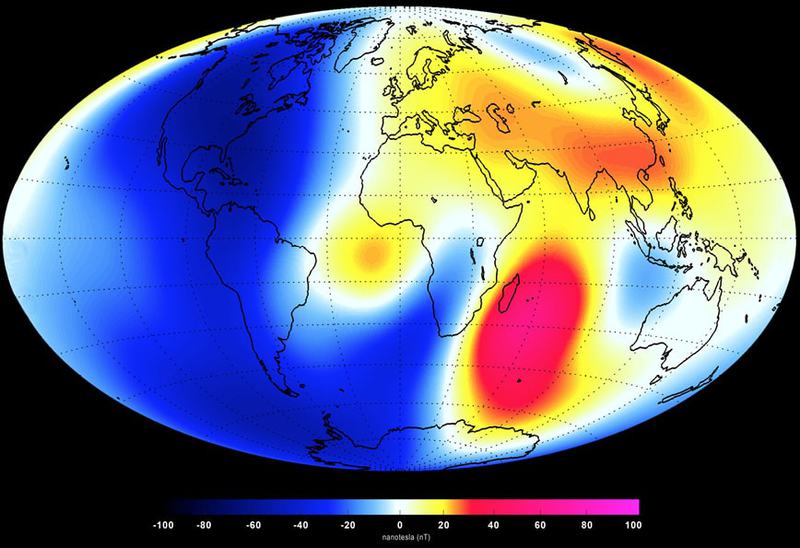 Magnetic mapping of Earth by the ESA Swarm Satellites (red shows where the magnetic field is strengthening and blue shows where it is weakening).
Magnetic mapping of Earth by the ESA Swarm Satellites (red shows where the magnetic field is strengthening and blue shows where it is weakening).
This means the potential of enormous risk to electric power grids with maybe thousands of electrical transformers burned to a crisp. It also means vital satellites for communications, broadcasting, global navigation and timing, weather forecasting, synchronising the Internet and assisting with aircraft take-off and landing could be suddenly rendered inoperable or severely degraded. As we add more people, more vital infrastructure and move to a highly urban environment with perhaps 70 per cent of all people living in urban centres, the vulnerability of humans all over the globe is growing.
A loss of vital infrastructure around the world could mean the failure of transportation, communications and power systems that could put millions of people at risk due to disease, starvation, water shortages or other dangers.
Today the space agencies around the world and the UN Committee on the Peaceful Uses of Outer Space (COPOUS), especially through its Long Term Sustainability of Space Activities initiative, are addressing cosmic threats from asteroids and comets, but have essentially said, ‘There is nothing we can do to protect Earth from solar radiation and perhaps even less from coronal mass ejections. It is up to agencies like Homeland Security [in the US] to address recovery from such a major solar-triggered disaster since we can do nothing.’
The basis of this article is simply to argue that this is not true. There is technology that we could deploy at Lagrangian Point 1 (L-1) that could potentially do the following:
- Create an artificial Van Allen ‘electro-magnetic shield’ that could protect Earth against a major solar coronal mass ejection that could otherwise have a crippling impact on the global economy and risk injury, illness or death to perhaps millions of people.
- Create a modulation system for solar radiation that could help slow or reduce climate change due to the source of energy that heats our planet and controls our climate.
- In creating a large magnetic shield system, we could also design-in solar power satellites that could beam back clean energy to Earth that could assist with the financing of the solar shield system.
- Finally, the structure that is designed could also be multi-functional in concept and become an effective way-station for efficient transportation to other points in the Solar System such as the Moon, Mars, or asteroids. The advantage of such a way-station is that the low gravitational pull at L-1 is such that highly efficient electrical propulsion systems could be used for travel from L-1 to any point in the Solar System.
This article is therefore about how such an innovative mega-structure could be designed to save the human species and Earth as we know it today. That is not to say this is something easy or inexpensive to build. It could be on a par, for example, with the cost of the International Space Station (ISS).
Loss of vital infrastructure around the world could mean the failure of transportation, communications and power systems that could put millions of people at risk
There are many issues to be addressed and considered before launching into such an ambitious project. Not the least of these would be who would design and build it, and who would control its operation. This could conceivably be a commercial global space industry consortium, but its operation would almost certainly have to be under some form of reliable and international authority that would guarantee the responsible on-going operation of such a key international space infrastructure.
The design of the ISS was far from easy. There were at least a dozen different concepts and, despite a reduction in size and performance capabilities, the price rose to around US$200 billion if the costs of all of the participating entities are included. US investment was an estimated US$140 billion.
A mega-structure that could be deployed at L-1 would not be some sort of scientific toy for international space cooperation - this would be a device to save Earth and would be of enormous economic value over the long term. Further it could be designed to have dual functions - a power generating system or way-station for low cost transportation to the Moon and Mars.
The key to the basic generic design will be lightweight electromagnetically charged structures that may be a combination of gossamer and inflatable structures. NASA’s Innovative Advanced Concept studies have examined the feasibility of electrostatically inflated membrane structures (EIMS) to create systems to protect astronauts in orbit from cosmic radiation.
It seems quite possible to create a cluster of such inflatable structures with a magnetic field charge level of perhaps 1 or 2 tesla (or 10,000 to 20,000 gauss) to create a solar shield system against not only radiation but coronal mass ejection ions as well.
The figure (right) is from the NASA-NIC study on protecting astronauts in space from solar radiation. The logical extension of this study would be to devise an architecture of a network of a number of these structures that could be combined to create an effective solar shield system. A combination of scores of these electro-magnetic force fields that could slow and divert solar radiation and ions from a powerful CME seems entirely possible.
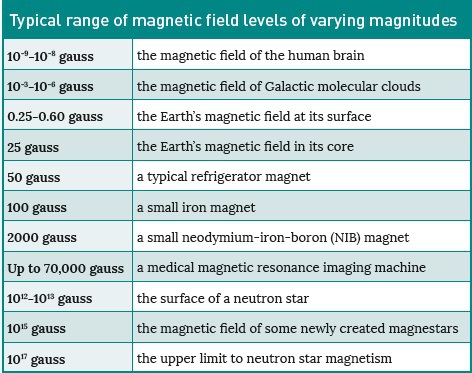 Chart showing the Magnetic field level represented by a gauss or a tesla (i.e. 10,000 gauss).
Chart showing the Magnetic field level represented by a gauss or a tesla (i.e. 10,000 gauss).
The idea would be to strategically locate this ‘magnetic solar screen’ in the L-1 position between Earth and the Sun. This screen could be maintained in position using an ion propulsion system powered from a solar array. Further, at a location that is 1.5 million km from Earth the structure would not have to be super-large to protect Earth.
The creation of a structure with an overall magnetic field of 2 tesla (or 20,000 gauss) would only require the development power sources that could be easily generated by solar arrays.
The accompanying chart (below) indicates the magnetic field levels of various applications.
Such a magnetic solar shield structure could provide protection against massive solar storms and could also even modulate solar radiation to protect against severe climate change. This extension in thinking from the NASA NIC studies seems only a logical next step with regard to how such technology might be usefully applied.
Clearly there are many scientific and engineering questions still to be addressed. Would gossamer structures be sufficiently durable or would more substantial inflatable structures such as those Bigelow Aerospace is using in its inflatable commercial space stations be a more suitable material? Would solar cell arrays, solar concentrators, or nuclear or radio isotope or other forms of power sources be optimum for the design to created the necessary magnetic fields?
This would be a device to save Earth and would be of enormous economic value over the long term
There are also fundamental engineering design questions regarding whether this design could be further enhanced to use part of this overall structure as a sort of space transport way-station for transitioning from chemically fuelled rocket launchers to much more efficient electric ion propulsion systems that could fly on to the Moon and Mars?
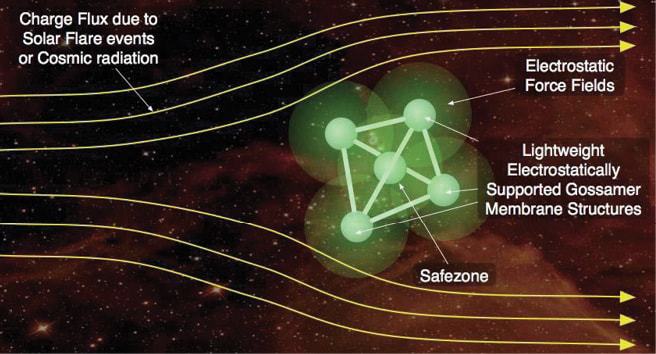 Conceptual study of magnetic structure in space to create a safe zone from radiation.
Conceptual study of magnetic structure in space to create a safe zone from radiation.
The parallel question is whether the overall solar screen system could also be designed to create a large scale solar power satellite station that could beam clean energy back to Earth 24 hours a day, seven days a week when the unit was not being deployed to save the Earth from a massive solar storm, modulating solar radiation to reduce climate change and overheating of the atmosphere?
It is more than a little thrilling to think of an invention that could literally save the world. One of my forebears, Lester Allen Pelton, who is in the Inventor’s Hall of Fame, not only first conceived the Pelton Water Wheel but extended the technology to invent the world’s first hydro-electric turbine - a fundamental technology that provides electric power around the world today.
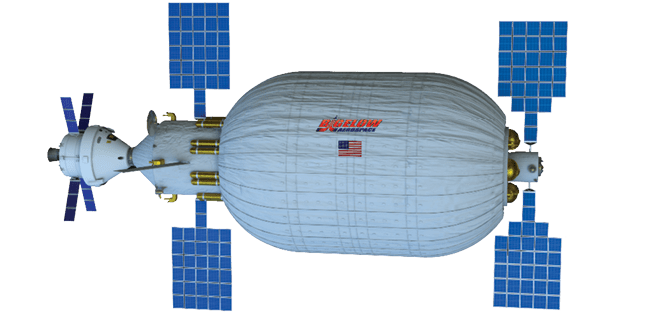
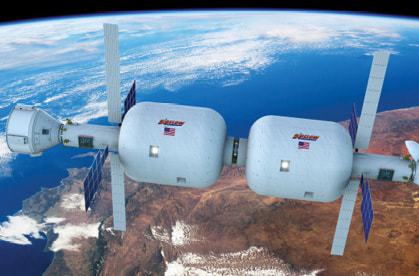 Inflatable structures used by Bigelow Aerospace for a private space station may be re-purposed to generate high powered magnetic fields to protect Earth.
Inflatable structures used by Bigelow Aerospace for a private space station may be re-purposed to generate high powered magnetic fields to protect Earth.
In his honour, I hope that the Pelton Space Shield and Transport Terminal (PSSTT) can help us reimagine what we can do to save Earth, save the human race, and power our future. When someone says to be me, “Psstt, what did you do with your life?”, someday I can say I helped the International Space University, space engineers and the world’s space agencies to start thinking about inventing, building and deploying PSSTT.
In the past few years ‘new space’ companies and initiatives like the XPrize, SpaceShipOne, SpaceX, Skybox, O3b, ViaSat, Blue Origin, Stratolaunch/Viking, Virgin Galactic, etc. have embraced disruptive new space technology and reinvented the innovative nature of outer space enterprise. It could now be the turn of space agencies to show their innovative side and take the lead in planetary defence.
For too long space agencies have had too little within their portfolio and mission plans that include programmes to save Earth and deploy space systems that can provide protection from asteroids, comets, solar radiation and solar ionic eruptions.
It seems to me that it is time to re-examine the prime mission of space agencies. The prime strategic agendas of space agencies have been on cruise control for too long and need to be disruptive.
Nobel Laureate Joseph Stiiglitz recently addressed the leadership of the Organization of Economic Cooperation and Development (OECD) and suggested that a new economic activity for our scientists and engineers should be ‘Planetary Defence’. It is time for those leading our space agencies to consider what technologies they might conceive and implement to save Earth and the human race. To put not too fine a point on it, now is the time for them to start doing their truly core mission - ‘Save Earth’.
References
1 Dickerson, Kelly, “Earth’s Magnetic Field Flip Could Happen Sooner than Expected” Scientific American, July 14, 2014 http://www.scientificamerican.com/article/earth-s-magnetic-field-flip-could-happen-sooner-than-expected/
2 Tripathi, Ram K., Principal Investigaor,”Meeting the Grand Challenge of Protecting Astronaut Health, “Electrostatic Active Space Radiation Shield for Deep Space Missions” NASA National Innovative Advance Concepts (NIAC) 2011 Supported Study https://www.nasa.gov/pdf/718390main_Tripathi_2011_PhI_Electrostatic_Radiation_Protection.pdf (last accessed March 21, 2016
3 Joseph N. Pelton, Ram Jakhu, and Scott Madry, “Defending Earth Against Cosmic Hazards”, Room, Winter/Spring, 2016, pp 11-15.
4 Joseph N. Pelton, “Protecting Earth and A Better Way to Mars” Space Safety Magazine January 13, 2016
5 http://www.spacesafetymagazine.com/space-hazards/space-weather/protecting-earth-and-a-better-way-to-mars/(last accessed March 21, 2016)





